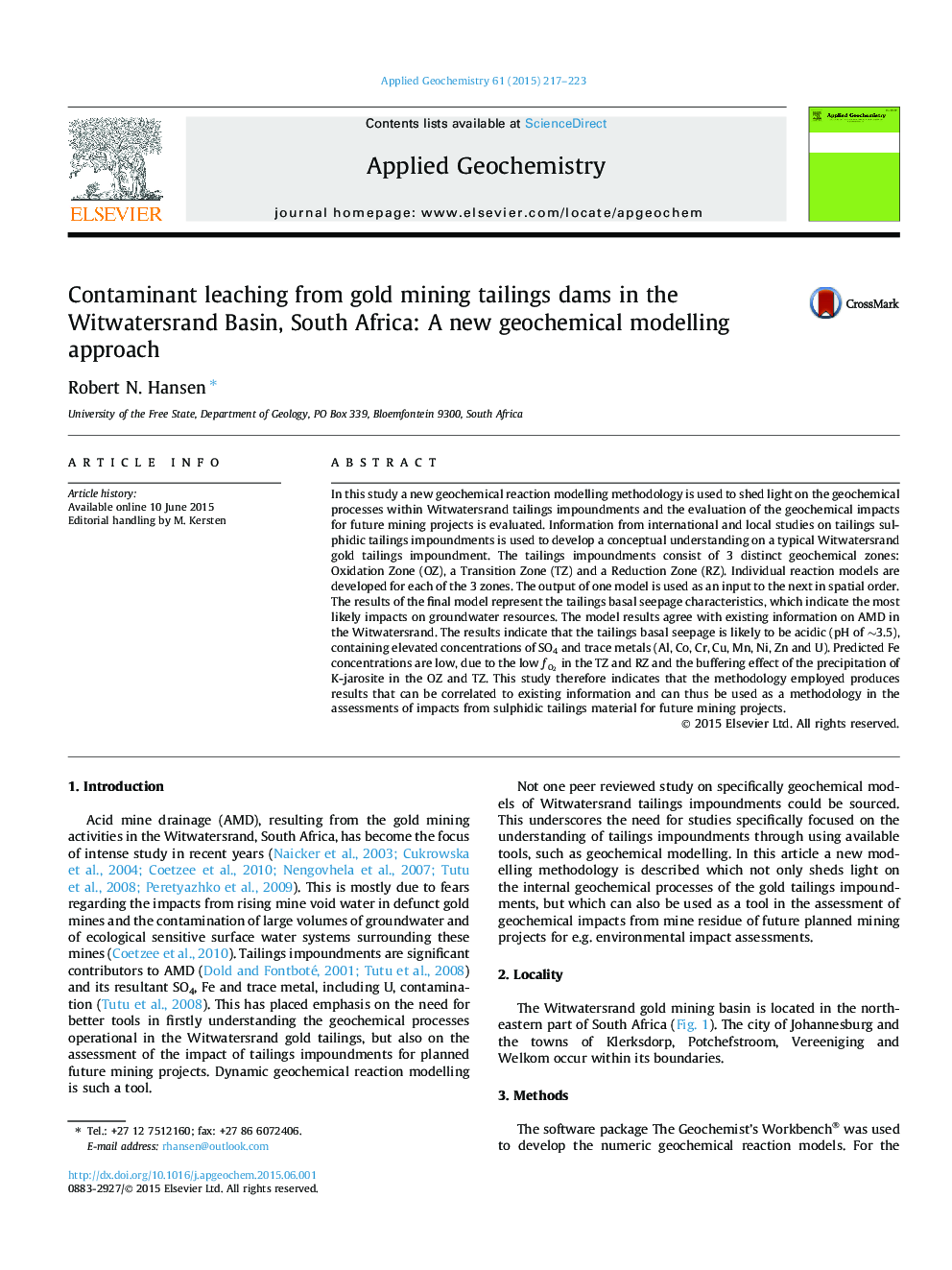| Article ID | Journal | Published Year | Pages | File Type |
|---|---|---|---|---|
| 6335032 | Applied Geochemistry | 2015 | 7 Pages |
Abstract
In this study a new geochemical reaction modelling methodology is used to shed light on the geochemical processes within Witwatersrand tailings impoundments and the evaluation of the geochemical impacts for future mining projects is evaluated. Information from international and local studies on tailings sulphidic tailings impoundments is used to develop a conceptual understanding on a typical Witwatersrand gold tailings impoundment. The tailings impoundments consist of 3 distinct geochemical zones: Oxidation Zone (OZ), a Transition Zone (TZ) and a Reduction Zone (RZ). Individual reaction models are developed for each of the 3 zones. The output of one model is used as an input to the next in spatial order. The results of the final model represent the tailings basal seepage characteristics, which indicate the most likely impacts on groundwater resources. The model results agree with existing information on AMD in the Witwatersrand. The results indicate that the tailings basal seepage is likely to be acidic (pH of â¼3.5), containing elevated concentrations of SO4 and trace metals (Al, Co, Cr, Cu, Mn, Ni, Zn and U). Predicted Fe concentrations are low, due to the low fO2 in the TZ and RZ and the buffering effect of the precipitation of K-jarosite in the OZ and TZ. This study therefore indicates that the methodology employed produces results that can be correlated to existing information and can thus be used as a methodology in the assessments of impacts from sulphidic tailings material for future mining projects.
Related Topics
Physical Sciences and Engineering
Earth and Planetary Sciences
Geochemistry and Petrology
Authors
Robert N. Hansen,
